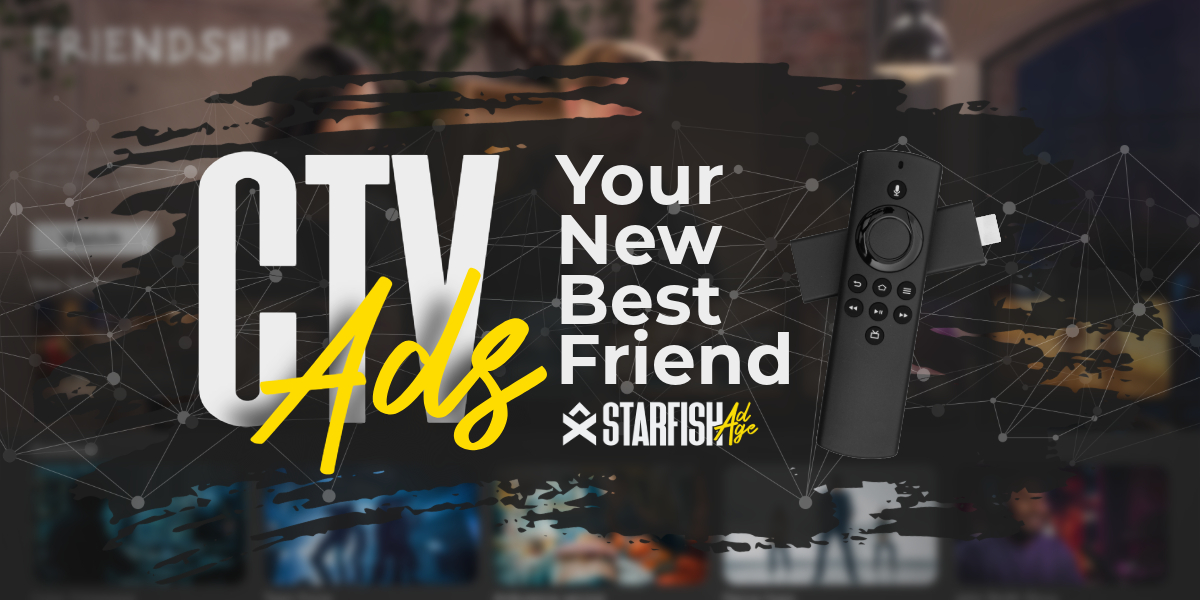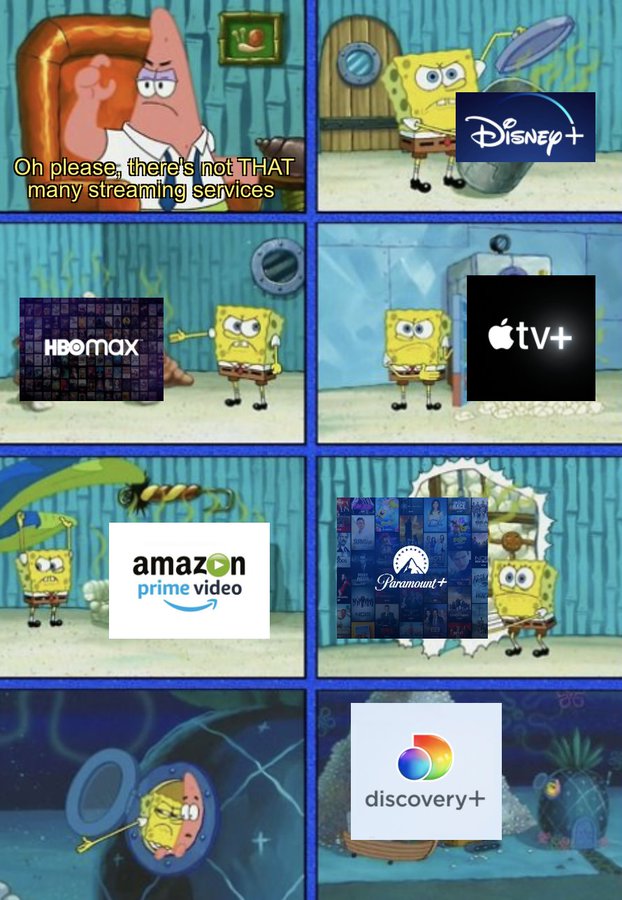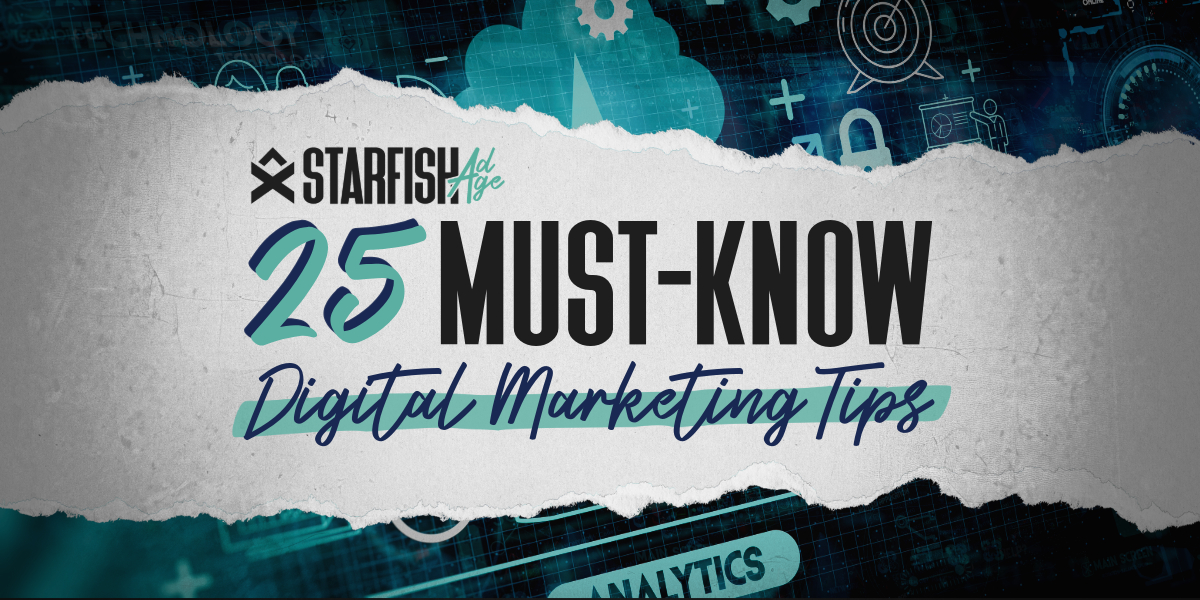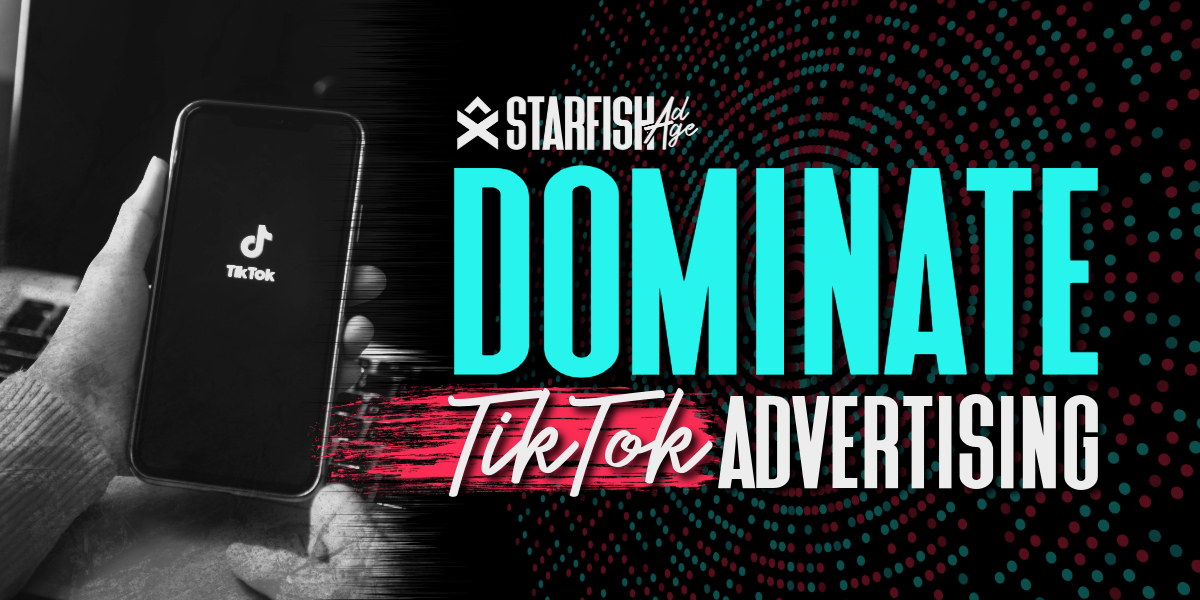
What Is The Future Of Email Marketing
Email marketing has been a powerful tool for businesses for decades. Choosing the right email marketing service can optimize strategies and gauge campaign performance effectively.

In programmatic advertising, CTV (Connected TV) is any TV that streams video content over the Internet. That’s your Smart TV, Roku, Apple TV, or gaming console. CTV advertising is serving ads on internet-connected TVs. It’s like traditional linear TV show advertising but with the bonus of digital targeting and measurement.
Unlike traditional TV ads broadcast to a general audience, CTV ads can be super-targeted. That means you can serve specific ads to specific audiences, making your ad spend more efficient and your campaigns more effective. With the ability to target demographics, behaviors, and even geographic locations, CTV advertising is a must-have in modern marketing.
CTV (Connected TV) Advertising delivers video ads through internet-connected devices like smart TVs, gaming consoles, and streaming devices. Unlike traditional TV ads, CTV ads are targeted and delivered digitally, so you can target specific audiences and have better measurements.
Unlike traditional TV advertising, which broadcasts to a broad audience, CTV advertising uses data-driven techniques to target specific viewers based on demographics, interests, and viewing behavior. So your ads reach the right people and are more effective and cost-efficient.
CTV advertising has many benefits, including targeted advertising, real-time analytics, and higher viewer engagement. Advertisers can track ad performance in real-time, adjust campaigns on the fly, and reach people who are more likely to be interested in their product or service.
CTV advertising campaigns can be measured by impressions, click-through rates, completion rates, and return on ad spend (ROAS). Advanced analytics platforms provide deeper insights into viewer engagement and ad performance, so you can optimize your CTV ad campaigns.
CTV advertising supports pre-roll, mid-roll, and post-roll video ads, interactive ads, and banner ads. These can be tailored to different content types and viewer preferences so the ad experience is seamless.

The growth of CTV has been incredible. More and more people are cutting the cord and going for streaming services over traditional cable and CTV has become a major player in the media landscape. This shift is a goldmine for advertisers who can no longer reach audiences through traditional cable TV channels.
CTV advertising has many benefits for brands. It’s not just about reaching a big audience; it’s about reaching the right audience. The precision targeting of CTV means you’re not wasting ad dollars on uninterested viewers. With the ability to track and measure your ads in real-time, you can continually optimize your campaigns for better results.

CTV advertising uses automated processes and real-time bidding (RTB). When a viewer starts streaming content, an auction happens in milliseconds, where advertisers bid for the chance to show their ad. The highest bidder wins and their ad is shown to the viewer instantly. This fast and efficient process means ads are relevant to the viewer’s interests and behaviors.
Advanced algorithms and big data make this possible. By analyzing user data such as viewing habits and demographic information, these algorithms can determine the best ad to show each viewer. That means more personalized ads that will engage viewers and drive conversions.

Smart TVs are TVs with internet built in so you can stream content without needing a separate device. They’re a one-stop shop for all your entertainment needs. Brands like Samsung, LG, Sony, and Vizio own this space and offer apps and services out of the box. With smart TVs, you can access Netflix, Hulu, and Disney+ directly; it’s a one-stop shop for digital entertainment. For advertisers, it’s an opportunity to reach audiences directly in their living rooms with high-quality, engaging ads.
Streaming devices like Roku, Amazon Fire TV, Apple TV, and Google Chromecast are external devices that connect to traditional TVs to give them internet streaming capabilities. They’re super popular because they’re affordable and easy to use. They support a wide range of streaming services so users can customize their viewing experience. From an advertising perspective, they offer broad reach across different audience segments and allow for targeted ad placement based on user data collected through these devices. They’re a key part of the CTV ecosystem, bridging the gap between traditional TVs and modern streaming needs.
Gaming consoles like PlayStation, Xbox, and Nintendo Switch are no longer just for gaming; they’re also powerful streaming hubs. Many users now use their consoles to access streaming services so these devices are a valuable CTV ad channel. With a demographic that’s often younger and more tech-savvy, advertising on gaming consoles can help you reach a highly engaged audience. Plus the immersive nature of these devices means ads can be more interactive and dynamic so higher engagement and effectiveness. You can leverage the loyalty and active participation of gamers to deliver your message.
Connected devices like streaming sticks and dongles are small and portable so they’re a popular choice for users who want flexibility. Examples are the Roku Streaming Stick, Amazon Fire Stick, and Chromecast dongle. These devices plug into the HDMI port of a TV and instantly turn it into a smart TV. Advertisers can leverage the user data these devices collect to deliver highly targeted and personalized ads. The portability of these devices means they’re often used in different environments so they expand the reach of CTV campaigns. They’re for users who want a seamless streaming experience without needing a new TV.
OTT refers to content delivered over the internet, bypassing traditional cable or satellite TV. Popular OTT services are Netflix, Hulu, Amazon Prime Video, and Disney+. These services have changed the way we consume media, offering a vast library of on-demand content. For advertisers, OTT services are a treasure trove of targeting options. Ads can be placed within the content streams, before the content starts (pre-roll), during the content (mid-roll), or after the content (post-roll), so viewers are exposed to the brand message in a non-intrusive way. OTT services are the new normal of entertainment, giving users control over what they watch and when.
Hybrid models combine traditional TV with CTV capabilities. This includes devices and services that offer both live TV and streaming options, like YouTube TV, Sling TV, and Hulu + Live TV. These models are for users who want the structure of traditional TV but also the flexibility of on-demand streaming. For advertisers, hybrid models offer the best of both worlds: the broad reach of live TV and the precision targeting of digital advertising. Ads can be placed in live programming and on-demand content for maximum exposure and engagement. Hybrid models are perfect for households that want access to live events and streaming libraries.
Each smart TV brand has its own operating system or platform, like Samsung’s Tizen, LG’s webOS, and Google’s Android TV. These platforms are the user interface and functionality of smart TVs, providing access to a wide range of apps and services. From an advertising perspective understanding the ins and outs of these platforms is key to optimising ad placements and targeting. Each platform has different capabilities and data insights so advertisers can tailor their strategy to the specific user experience of each smart TV brand. This knowledge helps you create more effective and engaging ads that resonate with viewers.
Mobile CTV apps are apps for smartphones and tablets that allow users to stream CTV content on their mobile devices. This includes apps from major streaming services like Netflix, Hulu, and Amazon Prime Video as well as apps from individual TV networks and content creators. Mobile CTV apps give users the flexibility to watch content on the go, expanding the reach of CTV advertising beyond the living room. Advertisers can target users based on mobile data like location and app usage, so they can create hyper-targeted campaigns. These apps cater to the growing trend of mobile viewing, so users can take their favorite shows and movies with them wherever they go.
ISP set-top boxes, provided by internet service providers like Comcast, AT&T, and Verizon, combine traditional TV services with internet streaming capabilities. These devices come with built in apps for popular streaming services and have features like DVR and on-demand content. For advertisers, ISP set-top boxes are a hybrid opportunity to reach users who use both traditional TV and streaming services. Ads can be served in live programming and on-demand content so multiple touchpoints to the audience. These devices allow users to switch seamlessly between traditional TV and streaming so the overall viewing experience is enhanced.
There are several types of CTV ads, each with its own benefits. Pre-roll ads are shown before the main content starts, mid-roll ads during a break in the content, and post-roll ads after the content ends. These ads can be skippable or non-skippable, depending on the platform and the advertiser’s goals.
Interactive CTV ads are also becoming popular. These ads encourage viewers to engage directly, whether by clicking on a product, taking a survey, or playing a mini-game. Ad pods, which are groups of ads shown together during a commercial break, can also be used to maximize ad exposure during popular streaming shows.
Getting started with CTV advertising begins with choosing the right platform. There are several to choose from, including Roku, Amazon Fire TV, and Google Chromecast. Each has its own features and benefits so research which one is best for your target audience and campaign goals.
Budgeting for CTV ads is another key step. Decide how much you want to spend and allocate your budget accordingly. Keep in mind that while some CTV advertising platforms can be more cost-effective than traditional TV, the cost will vary depending on the platform and targeting options you choose.

One of the big benefits of CTV advertising is the ability to target specific audiences. Demographic targeting lets you reach viewers based on age, gender, income, and other personal attributes. So your ads are seen by people who are most likely to be interested in your products or services.
Behavioral targeting takes this a step further by targeting viewers’ interests and online behavior. For example, if someone watches cooking shows frequently, you can serve them ads for kitchen gadgets or meal delivery services. Geo-targeting lets you target viewers based on their location, which is great for local businesses or regional campaigns.

Creating engaging CTV content starts with storytelling. Your ads should tell a story that resonates with your audience. Whether it’s a heartwarming tale or a funny skit, the goal is to grab attention and leave a lasting impression.
Keep it short and sweet, too. Viewers have short attention spans, especially when watching online content. Aim for concise, impactful messages that get your key points across quickly. This will keep the viewer engaged and ensure your message is delivered before they can skip the ad.
High-quality visuals and audio are non-negotiable. Your ad needs to look and sound professional to be taken seriously. Invest in good production values and make sure your ad is optimized for big TV screens and smaller mobile devices.
Clear and compelling calls-to-action (CTAs) are extremely important. Your ad should leave the viewer with a clear idea of what you want them to do next, whether it’s visiting your website, making a purchase, or signing up for a newsletter. The easier you make it for the viewer to take the next step, the more successful your ad will be.
Programmatic and CTV are a winning combination that makes digital marketing campaigns more effective. Programmatic technology automates the CTV ad buying process so it’s faster and more targeted. You can target specific audiences with data and real-time bidding, so your ads reach the right people. Programmatic gets rid of the manual processes so you can launch and adjust campaigns faster.
One of the best things about programmatic CTV is its ability to target audiences with precision. By using data from viewers’ streaming habits, device usage, and online behavior, you can serve ads that are super relevant to each viewer. This kind of targeting improves engagement rates and increases the chances of conversion, as ads are shown to those most likely to be interested in the product or service. It’s a win-win situation where viewers see ads that resonate with them and advertisers get more bang for their buck.
Real-time bidding (RTB) is a fundamental part of programmatic advertising and is key in CTV. When a viewer starts streaming content, an auction happens in real time where advertisers bid for the chance to show their ad. The highest bidder wins and the ad is shown almost instantly. This live process ensures ad placements are competitive and fair, so you can optimize your spend. With RTB you can adjust bids and strategies on the fly so your CTV campaigns are more agile and responsive to market changes.
One of the benefits of programmatic CTV is the ability to measure in detail. Advertisers can track viewability, completion rates, and audience engagement in real-time. This data-driven approach gives you valuable insights into what’s working and what’s not, so you can optimize the ad content and targeting. By understanding viewer behavior and preferences, you can refine your message and improve the overall performance of your campaign.
As technology advances, the bond between programmatic and CTV will only get stronger. We’ll see more targeting options, better data and better viewer experiences. With more smart TVs and streaming devices being adopted, CTV is becoming part of the digital advertising landscape. Advertisers who get programmatic CTV now will be ahead of the game and can reach their audience in more relevant and powerful ways.
Measuring the right metrics is key to measuring the success of your CTV campaigns. Impressions and reach will tell you how many people saw your ad and how many times it was shown. These will give you an idea of the overall campaign’s exposure.
View-Through Rate (VTR) will tell you how many viewers watched your ad to the end, which is a good measure of engagement. Conversion rates will tell you how many viewers took the desired action after seeing your ad, whether that’s making a purchase or visiting your website. These will give you a full view of your ad’s performance.
Several tools can help you measure your own CTV marketing campaigns. Analytics platforms like Google Analytics or CTV-specific tools will give you detailed insights into how your ads are performing. These tools can track impressions, clicks, and conversions and give you a clear view of your campaign’s performance.
A/B testing your ads is another great strategy. By running two versions of an ad and comparing the results, you can see what works best. This will help you optimize your ads for better results over time.

Retargeting allows you to reach viewers who have interacted with your brand before. By using data from previous campaigns, you can serve ads to users who have visited your website, engaged with your content, or shown interest in your products. This keeps your brand top of mind and encourages repeat engagement.
CTV, along with other digital campaigns, can amplify your reach. For example, you can use CTV ads to drive traffic to your website and then retarget those visitors with display or social media ads. This integrated approach ensures consistent messaging across channels and gets the most out of your marketing.
CTV works best when it’s part of a bigger marketing strategy. Synergize your CTV ad campaigns with social media to reach your audience across multiple touchpoints. For example, you can promote your CTV ads on social media to increase visibility and engagement.
Email marketing can also support your CTV campaigns. Use email to follow up with viewers who have seen your ads and provide additional information or exclusive offers. This multi-channel approach will reinforce your message and drive conversions.

Technical issues can be a big problem with CTV advertising. Ad compatibility across devices and platforms is key. Work with your tech team or ad platform to test your ads and resolve any compatibility issues before you launch.
Ad blocking is another issue. While ad blocking is less common on CTV devices, it still exists. To mitigate this create high-quality, engaging ads that viewers won’t want to skip. Also, work with ad platforms that have measures in place to bypass or minimize ad blocking.
Ad fraud is a problem in any digital channel and CTV is no exception. Fraudulent activity can eat into your budget and skew your performance metrics. To combat ad fraud, use tools and platforms that have robust fraud detection and prevention measures.
Spotting fraud early will save you money and improve the accuracy of your campaign data. Monitor your ad performance regularly and look out for unusual activity, such as sudden spikes in impressions or clicks. By being vigilant, you can protect your investment and make sure your ads are reaching real viewers.
As technology advances, programmatic CTV buying is becoming more common. This automated way of buying ad space allows for more efficient and targeted ad placement. Keep an eye on this trend to stay ahead and get the most out of your ad spend.
Personalization and dynamic ad insertion are also on the rise. These allow for highly customized ads that can be tailored to individual viewers in real time. Get on board with these trends and create more effective CTV campaigns.

Continuous learning and adaptation are key to winning at CTV advertising. The digital marketing and advertising world is always changing, so you need to stay up-to-date with the latest news and best practices. Attend industry events, join webinars, and read the latest research to stay informed.
Networking with other professionals can also provide valuable insights and opportunities. Join industry groups and online communities to connect with others, share experiences, and learn from others. By staying connected and informed, you’ll make sure your CTV advertising is effective and up-to-date.
CTV advertising is a powerful way to reach your target audience. By understanding it and following best practices, you can create campaigns that deliver. From setting up your first campaign to measuring success and staying ahead of trends, there’s a lot to learn and discover.
Invest in CTV advertising and get big returns for your business. Target the right audience, optimize your ads, and refine your strategy, and you’ll be successful in the long term. Let’s get started and get the most out of the CTV advertising platform!

Email marketing has been a powerful tool for businesses for decades. Choosing the right email marketing service can optimize strategies and gauge campaign performance effectively.

Discover successful email marketing strategies to boost engagement, drive conversions, and grow your business with impactful campaigns.

Discover the basics of marketing automation and how it helps businesses save time, streamline campaigns, and boost results.

Discover the importance of lead generation for boosting business growth, building connections, and driving long-term success.

Explore the differences between traditional and digital advertising. Learn which strategy is best for your business, from broad reach to targeted campaigns.

Use LinkedIn’s new video feed to grow your audience. Learn specs, best practices, and tips for creating engaging posts to boost your visibility on LinkedIn.

How major social media legal battles in 2024, including Supreme Court rulings and the Kids Online Safety Act, are impacting businesses and digital marketing.

Discover 10 iconic brands like Blockbuster, Kodak, and Toys “R” Us that went extinct because they failed to innovate.

Gen Z Marketing That’s Breaking The Internet: Discover how Gen Z marketers use bold, unpredictable strategies to capture attention.

Learn how AI tools improve customer experience, streamline operations, optimize marketing, and reduce operational costs.

Discover how AI transforms digital marketing through automation, personalized strategies, and data-driven insights.

Discover five powerful strategies for building brand awareness, from partnerships and influencer marketing to social media and SEO.

Get the latest insights on Google’s ad tech monopoly trial and how it could reshape digital advertising, competition, and your ad strategies moving forward.

Follow TikTok’s legal battle against the ban and learn how it could affect creators. Get the facts and understand the potential future of the platform.

A few of the most significant marketing mistakes we’ve seen in 2024 so far, why they happen, and simple ways to avoid them to keep your campaigns on track.

Explore key strategies in our 2024 Digital Marketing Guide. Learn to understand your audience, build an online presence, and optimize for business growth.

Discover 25 essential digital marketing tips for small businesses. Boost your online presence, attract customers, and drive sales with proven strategies.

14 Essential Digital Marketing Solutions to Boost Your Business Growth

Learn about SEO, PPC, social media marketing, content marketing, and more to drive traffic and conversions. Read now!

Learn how to select the best digital marketing agency for your small business, the benefits of hiring an agency, and tips for maximizing your online presence.

Learn how to leverage TikTok advertising, ad formats, targeting options, and best practices to increase brand awareness, and drive sales.

Discover the benefits of programmatic advertising, an automated method of buying digital ad space that enhances targeting, efficiency, and campaign performance.

Discover what SEO in digital marketing is and why it matters. Learn how search engine optimization can increase your business’s success.

Learn how to advertise on Google effectively. The basics of Google Ads, from setting up your account to targeting your audience and driving qualified traffic.
All Rights Reserved | Starfish Ad Age LLC | 2023 | Privacy Policy